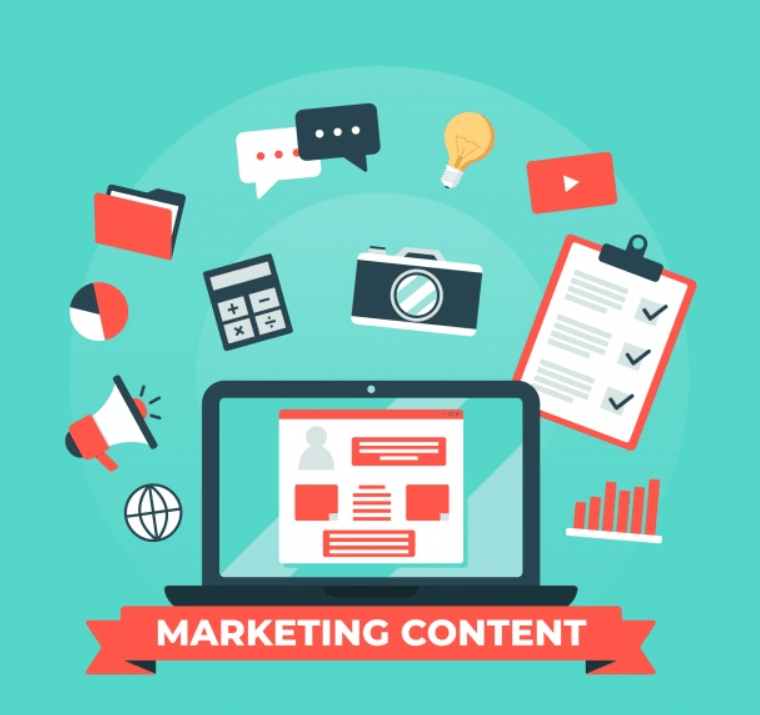Do you frequently ask “What is Inbound Marketing? Want to know more about it?
Yeah?
Stay ahead!
It is a technique that advertisers use to draw prospective consumers to their goods and services by generating premium content and leveraging different digital platforms such as content marketing, social networking, and search engine optimization to distribute the content to the right angle.
It is a marketing technique that uses both the “free” and “managed” platforms to pull in guests rather than promoting the product or service outwardly by paying networks in the expectation of lead generation.

The most powerful aspect of it is that, unlike the paid advertisements that stop producing leads and traffic until you stop paying for them, the advertising used generates traffic before you expect it to. Inbound Marketing focuses mainly on quality, exposure, commitment, trust and satisfaction.
According to Hubspot, 56% of marketers reported that it produces eligible leads and 46 per cent of marketers agreed that their ROI was increasingly growing due to Inbound Marketing.
Why is Inbound Marketing Trending?

To businesses with an online footprint, it plays a significant part. It is a Digital Marketing approach focused on targeting target audiences through advertising and having the ability to turn target audiences into consumers. In a simplified way, inbound marketing lets you draw and promote traffic to your website.
With the technology revolution, the people’s thought style has shifted. They have now been digitalised from being old. Their first preference to seek information about anything is the internet. To obtain valuable and informative content, they depend very much on online content.
Like conventional marketing approaches, it provides interest in the form of content to attract consumers and channels them into the purchasing inbound marketing funnel. Furthermore, Inbound Marketing provides the prospects fast and appropriate approaches without beating around the bush.
Using Inbound Marketing for the Growth of Business
The transition in the marketing environment from traditional to modern has often shifted people’s purchasing behaviour. We are searching for details in a manner that is somewhat different from the way we used to back several years. it has, in effect, generated a trend in the marketing realm, and has become openly a key component of online business growth.
Inbound Methodology is generally a process in which visitors are turned into potential customers. The Inbound Marketing Methodology is thus a 4-stage strategic process. These stages are alluring, converting, closing and delighting. The Inbound Methodology was created with a vision that targets customers at all levels and leaves no scope to miss any leads.
Components of Inbound Methodology
The approach for it is categorized into 4 stages: Attract, Convert, Close and Delight. Let’s get them analyzed in depth.
1. Attract
The first level of Strategies is to Attract. This stage has a specific goal of transforming generals into visitors. It is evident that as an online company, you look forward to receiving tremendous traffic which is both important and result-oriented. You need relationship-building for this. Relationships are built further when you attract people and inform them about your existence.
If you’re looking forward to building relationships, make sure you target audiences that are interested in your product or service. This fills the inevitable divide and helps you to communicate with individuals who have the ability to become clients.
Buyer Profile is a specific concept that comes useful when approaching the right market. Buyer Personas are your ideal customer’s fictional characters. Buyer Personas help in creating a focused inbound marketing strategy.
The next step is to create entertaining and engaging content that will influence the target audience to take the desired action and upgrade them to the next stage of Inbound Marketing Methodology after you’ve decided on your buyer personas.
Strategies used in the Attract Stage
(i) Landing Pages
Landing Pages comes as an inbound marketing strategy directly to your target audience. So they should be optimized to attract huge audiences as well. Have user-friendly controls, pictures and videos appealing to the eye. Attractive Landing Pages are truly advantageous. They retain the user for a longer period of time on the web page which further increases the rate of engagement.
(ii) Social Media

(iii) Keywords
Bearing in mind the heavy online rivalry, you have to make sure you stand out in the crowd. So you have to customize the keywords that are omnipresent on the website to get a higher rank on the Search Engine Results Page and draw eligible traffic.
(iv) Blogs
The blogs’ popularity has also increased with the rise in demand for content. Blogging helps visitors get in touch with the brand.
2. Convert
Since effectively engaging your target market, the next move is to turn those guests into long-term clients. You need to get their contact details to help you build leads to send them down the purchase inbound marketing funnel. Well, it might sound very easy to get people’s contact information but this is a real challenge.
To get their contact information, such as phone numbers or email ids. There’s something you would have to give them in exchange. All that is of great interest to them is ebooks, newsletters, case studies, webinars etc.
Strategies used in the Convert Stage
(i) Landing Pages
They should be guided to a specially built conversion page called Landing Page after you visitor clicks on the CTAs. At this point, the process of exchange starts where visitors fill out their contact information in return for some valuable information. Therefore your landing page will have a form to fill in your guests with their contact information.
(ii) Call-To-Action

(iii) Contact Lists
Database maintenance is as important as getting information. Keep track of all the contacts, and maintain a good record of leads.
3. Close
The next move is to make them your happy and faithful clients, after attracting the tourists and turning them into eligible leads. This stage is strongly geared towards conversion and is based on the customer. Make sure the leads are sales oriented and are ready to purchase your product or service.
(i) Emails
Emails are a technique to connect to your leads and guide them to the funnel for conversion.
(ii) Marketing Technique
This is the combination of digital marketing and direct sales. This is one of the most successful ways of maintaining leads.
(iii) Lead Scoring
That is a way of looking at whether or not the leads are based on sales. In general, each lead is assigned a numerical value which decides its importance in sales.
4. Delight
The Inbound Marketing Methodology final step. You should realize that the delivery of the goods or service does not put Inbound Marketing to an end. Despite the Inbound Advertising is still constant. The Delight Stage is responsible for establishing good, positive & long-term relationships with existing clients.
Types of Inbound Marketing (InbounMarketing Examples)
1. Search Engine Optimization
Search Engine Optimization is the method of making high-quality improvements to produce even more performance to the web site. It is achieved with the goal of making the Search Engines find the correct information on your website and in return drawing targeted viewers to your website. It is one of the key Inbound Marketing types. SEO begins with targeted keywords which are your building blocks
2. Social Media
Social Media has undeniably been one of the fastest new channels helping brands communicate with their target market. More and more people are entering social media, as a matter of fact. This makes social media a perfect medium for applying the technique of Inbound Marketing.
3. Content Marketing

4. Pay Per Click
Pay By Click Advertising, popularly known as PPC, is based solely on keywords. That makes PPC one of the Inbound Marketing types. The only difference between PPC and SEO is that while PPC is paid in nature, SEO fetches organic results. On the keyword, a bid is applied to obtain a guaranteed ad place.
Benefits of Inbound Marketing

1. Inbound Marketing Generates More Qualified Leads
You can generate leads, or you can produce eligible leads. Inbound marketing is helping you discover more like this one. How?
Inbound marketing reviews the traditional marketing paradigm in which a message is broadcast to a largely passive audience by the marketing department using different channels. Instead, inbound tactics recognize communication as being a two-way street in the customer relationship.
Inbound also promotes interactivity of this kind, encouraging leads to engage explicitly in their interaction with you.
Effective inbound marketing targets markets who are still engaged in getting the message, and are tuned to it. Such people are predisposed to behave now. If they click on a link or watch a video, they will pass on their curiosity to you.
Since the people you reach are already interested in and willing to take action, you usually get more qualified leads. The inbound marketing strategy will help you better optimize your audience such that only the most eligible leads are available for you to track.
2. Inbound Marketing Generates More Sales
It is critical that you bring more leads into your sales pipeline. It’s fun to have more eligible leads too. However, what you really want is to close more offers and raise profits. What is a marketing campaign successful if it produces more leads but those leads do not turn into further sales?
The positive thing is that inbound marketing turns such additional leads to further revenue. Most companies report attracting new clients through their social media marketing activities, and most individuals look to their social media networks for motivation for buying. There are those who react to the brands that they see.
3. You Can Boost Sales and Revenue Growth
Closing more deals are one of the greatest obstacles that salespeople face in many businesses today, so it’s crucial to have a successful inbound marketing campaign that produces more sales. What’s more, inbound also stimulates revenue growth.
This could seem apparent to you. If you have more sales, the revenue should also rise to your company. However, this is not always true especially if you stick to outbound techniques. Inbound, in turn, is actually stepping up revenue growth. Many marketers using an inbound approach, combined with sales enabling, noticed that they could improve their revenue growth. They often outpaced their competition quite significantly.
4. Inbound Marketing Allows You to Focus on Building Brand Awareness

Inbound marketing is a better approach than distributing strategies such as tv commercials and radio advertising. The secret to its effectiveness lies in focussing on building relationships. You ‘re more able to narrow-cast the message to a subset of interested parties for an inbound approach. Instead of focusing on many unselfish leads, you can spend more time building confidence and a relationship with the interested people.
That in effect encourages interactivity and reciprocity. When people learn that your blog is a reliable source of expert knowledge they start sharing it with others. Interactions with social media can make you more visible to new audiences. As more people talk about your brand and interact with you, there will be even more people coming in.
5. Inbound Builds Trust and Relationships
Any basic inbound concepts are interactivity and an emphasis on relationships. Although outbound marketing treats the viewer as a passive entity waiting for the message to be answered, inbound understands the value of creating a conversation with prospective clients.
Most inbound tactics revolve around confidence building and relationship-building principles. They emphasize genuine engagement with the audience, answering questions, presenting facts, and sometimes entertaining current customers and potential customers.
This creates a reputation to deliver premium content, and prospective consumers learn to trust the experts. That happens even before one of your salespeople has made a purchase or contacted them. You’ll attract more leads as you build your reputation for being a trustworthy brand with great expertise.
6. Inbound Marketing is Cost & Time Effective
One of the main advantages of inbound marketing is that it doesn’t need a big budget. Unlike outbound marketing that incurs a huge amount of internet-wide budget on advertising on various platforms. Inbound marketing helps to attain leads in quality without spending huge fortunes. It also helps to avoid making different advertisements for different platforms, thereby saving time and money.
7. Inbound Marketing Increases Trust & Credibility
The most successful way of building up the brand’s reputation is by inbound marketing. As inbound marketing provides relevant and appropriate content to potential customers it creates a trusted relationship between the two. Inbound Marketing presents the prospects with reliable knowledge, rather than forcing promotions that would make the source trustworthy.
Inbound & Outbound Marketing
Compared with outbound marketing, Inbound marketing is something of a modern term. Inbound marketing focuses on attracting consumers through the delivery of contextual information, while outbound marketing focuses on sending out product and service information by inorganic means to a wider audience.
Outbound marketing is also known as traditional marketing, which highlights advertising on different platforms without identifying a target audience and using advertisements for a large population. After ads arrived, the essence of the consumers has changed. Most of the ads are ignored as it does not provide the consumer with relevant knowledge and therefore there is no point spending on the advertising process.
Final Thoughts
Inbound Marketing has been a major marketing force in the last few years. It has not only updated the conventional approaches but has also created modern and effective ways of selling with less capital use. One of marketing’s most dynamic and innovative methodologies, Inbound Marketing will surely be a long-term success.



